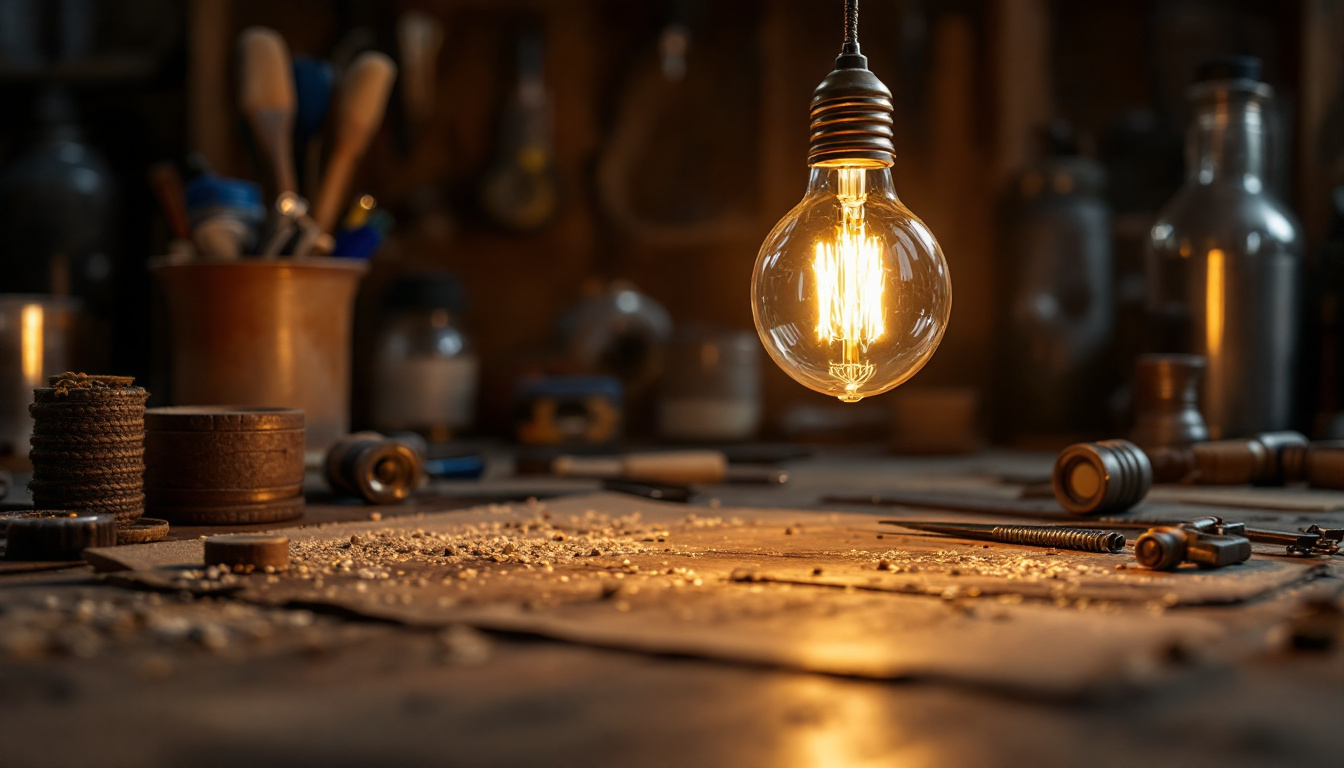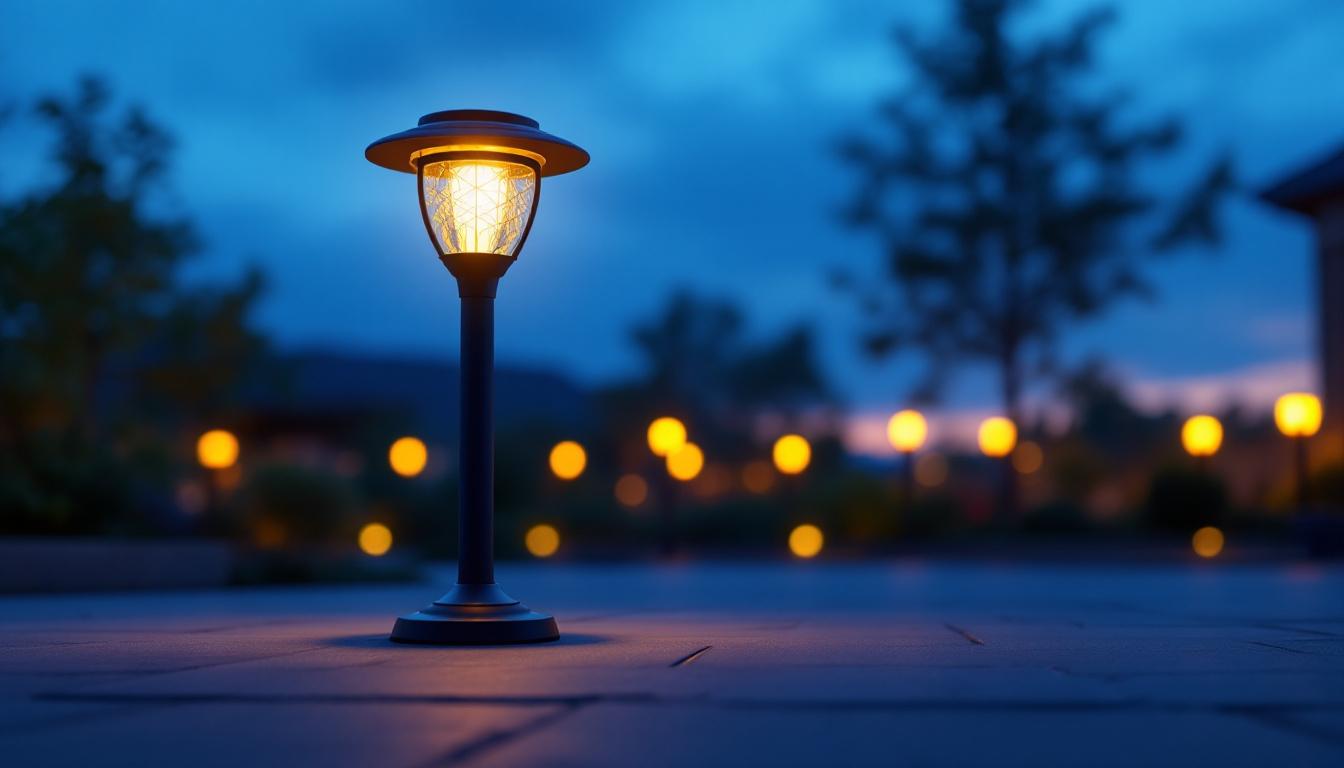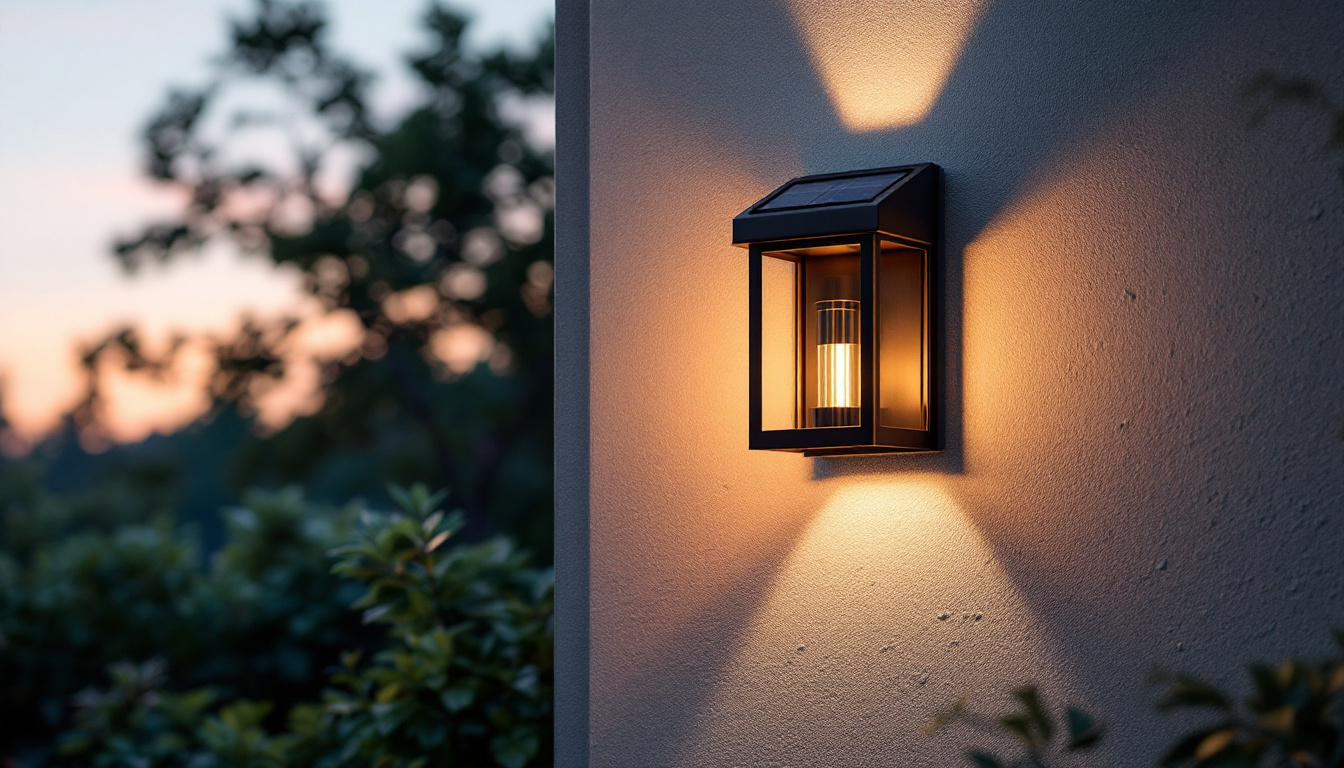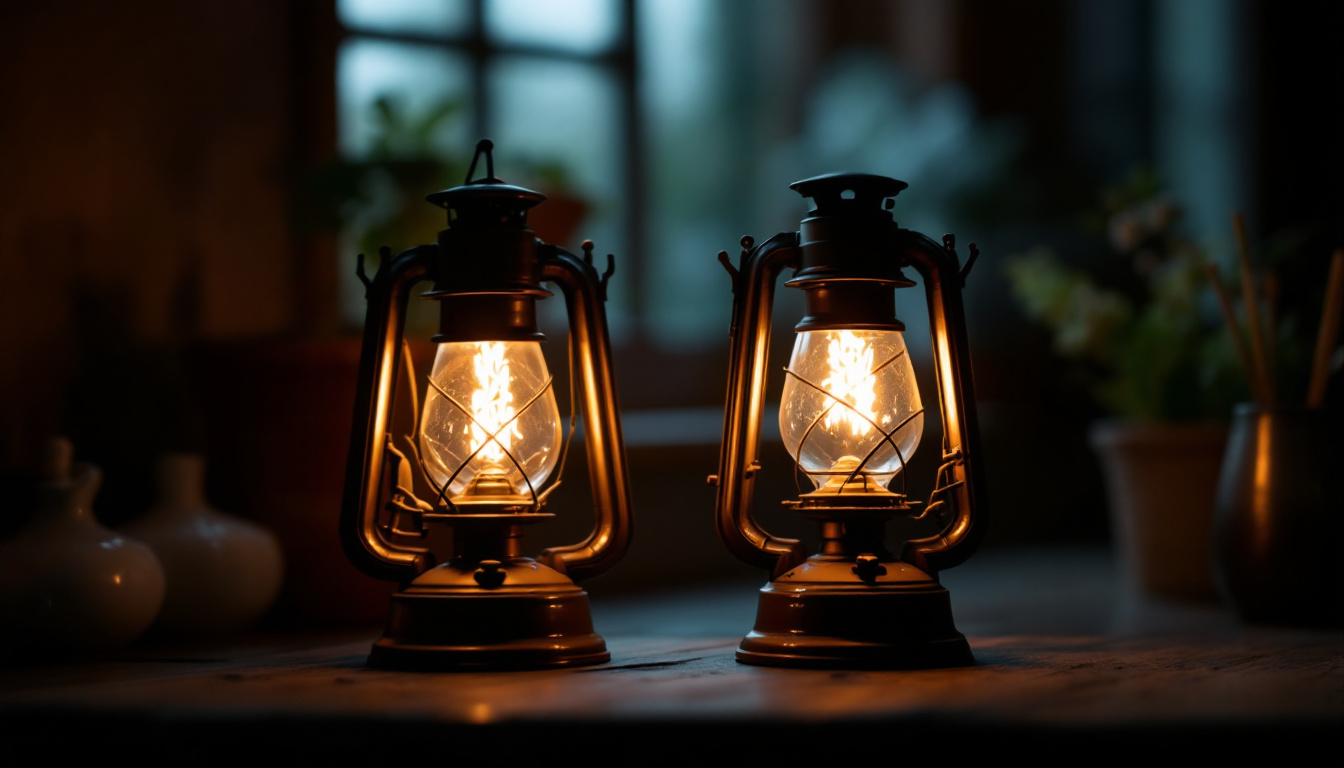
Thomas Edison is often credited with the invention of the light bulb, a claim that has sparked much debate and discussion. While it is true that he did not invent the light bulb outright, his contributions to its development and commercialization were pivotal. Understanding the evolution of Edison’s first prototype can provide valuable insights for lighting contractors looking to improve efficiency and effectiveness in their projects.
The path to the modern light bulb was paved by numerous inventors, each contributing unique ideas and technologies. Edison’s work was not merely about creating a light source; it was about making it practical for everyday use. His focus on creating a reliable and long-lasting bulb transformed the way people illuminated their homes and businesses.
Before Edison, several inventors experimented with electric lighting. Arc lamps were used in street lighting, but they were impractical for indoor use due to their brightness and flickering nature. Edison’s challenge was to create a bulb that could be used safely and effectively in homes.
Among the key innovations leading up to Edison’s work were the carbon filament and the vacuum-sealed glass bulb. These elements were crucial in developing a light bulb that could sustain a long burn time without burning out quickly. Edison’s experimentation with different materials and designs laid the groundwork for the first commercially viable light bulb.
In addition to the carbon filament, the development of the electrical infrastructure was essential for the widespread adoption of electric lighting. The establishment of power stations, such as the one built by Edison in New York City, provided the necessary electricity to power these new light bulbs. This infrastructure not only facilitated the use of light bulbs but also marked a significant shift in how energy was consumed in urban areas, paving the way for the electrification of homes and businesses across the globe.
Edison’s method was characterized by relentless experimentation. He famously tested thousands of materials for filaments, including carbonized bamboo, before settling on a carbon filament that proved effective. This trial-and-error approach not only led to the creation of a functional light bulb but also demonstrated the importance of persistence in innovation.
For lighting contractors, this lesson in perseverance is invaluable. The process of trial and error can lead to significant advancements in efficiency and design, encouraging contractors to explore new technologies and materials in their projects. Edison’s work also highlighted the importance of collaboration; he surrounded himself with skilled engineers and scientists who contributed their expertise, fostering an environment where creativity and innovation could flourish. This collaborative spirit continues to be essential in the field of lighting design today, as professionals work together to develop smarter, more sustainable lighting solutions that meet the demands of modern society.
Edison’s first prototype of the light bulb was not merely a glowing filament; it was a carefully designed system that included the bulb, the filament, and the electrical circuit. Each element was crucial for the overall performance of the light bulb.
The filament is arguably the most critical component of the light bulb. Edison’s choice of a carbon filament allowed for a longer lifespan and a more stable light output compared to earlier designs. This innovation reduced the frequency of bulb replacements, which was a significant concern for consumers.
For lighting contractors, understanding the properties of different filament materials can lead to better choices in lighting solutions. Selecting the right filament can enhance the longevity and reliability of lighting installations, ultimately improving customer satisfaction. Moreover, advancements in filament technology have continued since Edison’s time, with modern options like tungsten filaments and LED technology offering even greater efficiency and durability. These innovations not only meet the demands of contemporary consumers but also align with sustainability goals, as they consume less energy and have a lower environmental impact.
The glass bulb served a dual purpose: it protected the filament and created a vacuum environment that prevented oxidation. This design choice was revolutionary, as it allowed the filament to burn hotter and brighter without burning out quickly. Edison’s attention to detail in the bulb’s design exemplifies the importance of quality in lighting products.
Contractors can take a cue from Edison’s approach by prioritizing quality materials in their installations. A well-designed lighting fixture not only enhances aesthetics but also ensures optimal performance and longevity. Additionally, the shape and size of the glass bulb can influence the distribution of light, making it essential for contractors to consider these factors when selecting bulbs for different environments. For instance, larger bulbs may provide a more diffused light, ideal for creating a warm ambiance in residential settings, while smaller, more focused bulbs can be perfect for task lighting in commercial spaces.
The electrical circuit was another critical aspect of Edison’s prototype. He developed a complete electrical system that included generators, wiring, and switches, making it easier for consumers to adopt electric lighting. This comprehensive approach ensured that the light bulb was not just an isolated invention but part of a larger ecosystem of electrical lighting.
For lighting contractors, understanding the integration of lighting systems is essential. A well-planned electrical circuit can enhance the efficiency of lighting solutions and streamline installation processes. This holistic view of lighting design can lead to better outcomes for both contractors and clients. Furthermore, as smart technology continues to evolve, integrating smart switches and sensors into electrical circuits can offer even greater control and energy savings. By embracing these advancements, contractors can provide clients with cutting-edge solutions that not only illuminate spaces but also contribute to a more sustainable future.
Edison’s success was not solely due to his inventions but also his ability to market and commercialize them effectively. He established the Edison Electric Light Company, which played a crucial role in bringing electric lighting to the masses. This shift had profound implications for society, transforming how people lived and worked. The introduction of electric lighting not only extended the hours in which people could be productive but also influenced social interactions, as public spaces became safer and more accessible after dark.
By demonstrating the practicality of electric lighting, Edison created a market that previously did not exist. His public demonstrations, including lighting up entire buildings, showcased the potential of electric light and captured the public’s imagination. This marketing strategy was instrumental in driving adoption and acceptance of electric lighting. Furthermore, Edison’s ability to partner with local governments and businesses helped to establish infrastructure for electric distribution, which was essential for widespread adoption. The excitement surrounding these innovations sparked a cultural shift, leading to a new era where electricity became synonymous with modernity and progress.
For lighting contractors, understanding the importance of marketing and education can enhance their business strategies. Educating clients about the benefits of modern lighting solutions can lead to increased demand and project opportunities. By hosting workshops or informational sessions, contractors can demystify the technology behind electric lighting and showcase its advantages over traditional methods. This proactive approach not only builds trust with clients but also positions contractors as thought leaders in the industry, ultimately driving growth and innovation in their businesses.
The impact of Edison’s innovations on efficiency cannot be overstated. The introduction of the light bulb allowed for more efficient use of energy compared to gas lamps and candles. This shift not only reduced costs for consumers but also opened up new possibilities for lighting design and application. As electric lighting became more prevalent, it paved the way for advancements in lighting technology, including the development of fluorescent and LED lighting, which further enhanced energy efficiency and longevity.
Lighting contractors can leverage these efficiency gains by promoting energy-efficient lighting solutions. With the growing emphasis on sustainability, offering products that reduce energy consumption can set contractors apart in a competitive market. Moreover, as energy regulations become stricter, contractors who prioritize eco-friendly options can ensure compliance while appealing to environmentally conscious consumers. By integrating smart lighting systems that optimize energy use based on occupancy and natural light availability, contractors can not only enhance their service offerings but also contribute to a more sustainable future, aligning their business practices with the evolving values of society.
The legacy of Edison’s first light bulb prototype continues to influence modern lighting technologies. While advancements have led to the development of LED and smart lighting solutions, the fundamental principles established by Edison remain relevant.
Today’s lighting technologies have evolved significantly, with LEDs offering unprecedented efficiency and longevity. However, the core idea of creating a reliable and effective light source is still rooted in Edison’s work. Understanding these advancements allows lighting contractors to stay ahead of the curve and offer cutting-edge solutions to their clients.
Contractors can benefit from staying informed about the latest trends and technologies in lighting. This knowledge enables them to recommend the best solutions for their clients, ensuring satisfaction and fostering long-term relationships.
In an era where energy efficiency and sustainability are paramount, Edison’s innovations serve as a foundation for modern practices. The transition from incandescent bulbs to LEDs represents a significant leap in energy efficiency, but the principles of effective design and quality materials remain crucial.
Lighting contractors can play a vital role in promoting sustainable practices by offering energy-efficient solutions and educating clients on the benefits of modern lighting technologies. This approach not only enhances the contractor’s reputation but also contributes to a more sustainable future.
Thomas Edison’s journey in developing the light bulb prototype is a testament to the power of innovation, perseverance, and effective marketing. His contributions laid the groundwork for a lighting revolution that continues to impact the industry today. For lighting contractors, understanding this history can provide valuable insights into improving efficiency and effectiveness in their work.
By embracing the lessons learned from Edison’s prototype, contractors can enhance their offerings, promote sustainability, and ultimately provide better solutions for their clients. The legacy of Edison is not just about the light bulb; it is about the ongoing pursuit of innovation and excellence in the lighting industry.
Embrace the spirit of innovation and efficiency that Thomas Edison championed with LumenWholesale’s spec-grade lighting products. As a lighting contractor, you understand the importance of quality and value in every installation. That’s why we offer an extensive selection of top-quality lighting solutions at unbeatable wholesale prices, designed to meet the highest industry standards. Say goodbye to inflated markups and hello to hassle-free bulk buying with free shipping. Elevate your lighting projects and experience the perfect blend of quality, affordability, and convenience. Take the first step towards brighter, more efficient lighting solutions by visiting Wholesale Lighting at the Best Value today.

Discover how integrating electrical switches with timers can enhance efficiency and profitability in lighting installations.

Discover why lighting contractors should prioritize round solar lanterns in their projects.

Illuminate your projects with our comprehensive guide on solar outdoor wall lanterns.

Explore the common misconceptions among lighting contractors regarding Thomas Edison’s inventions.